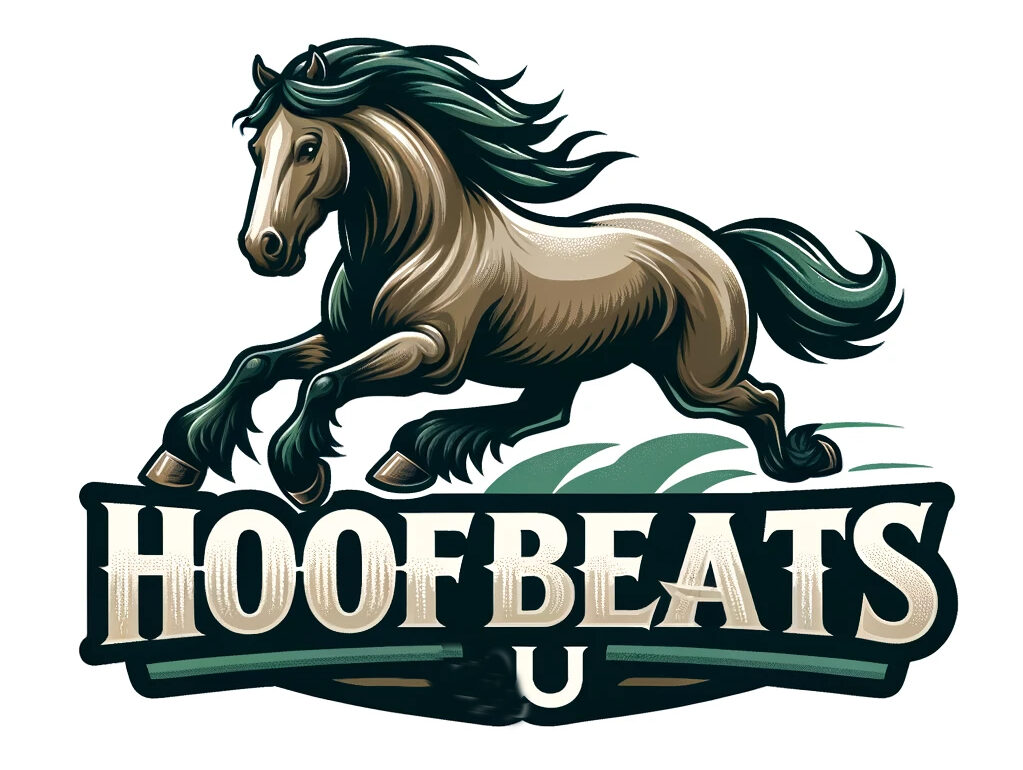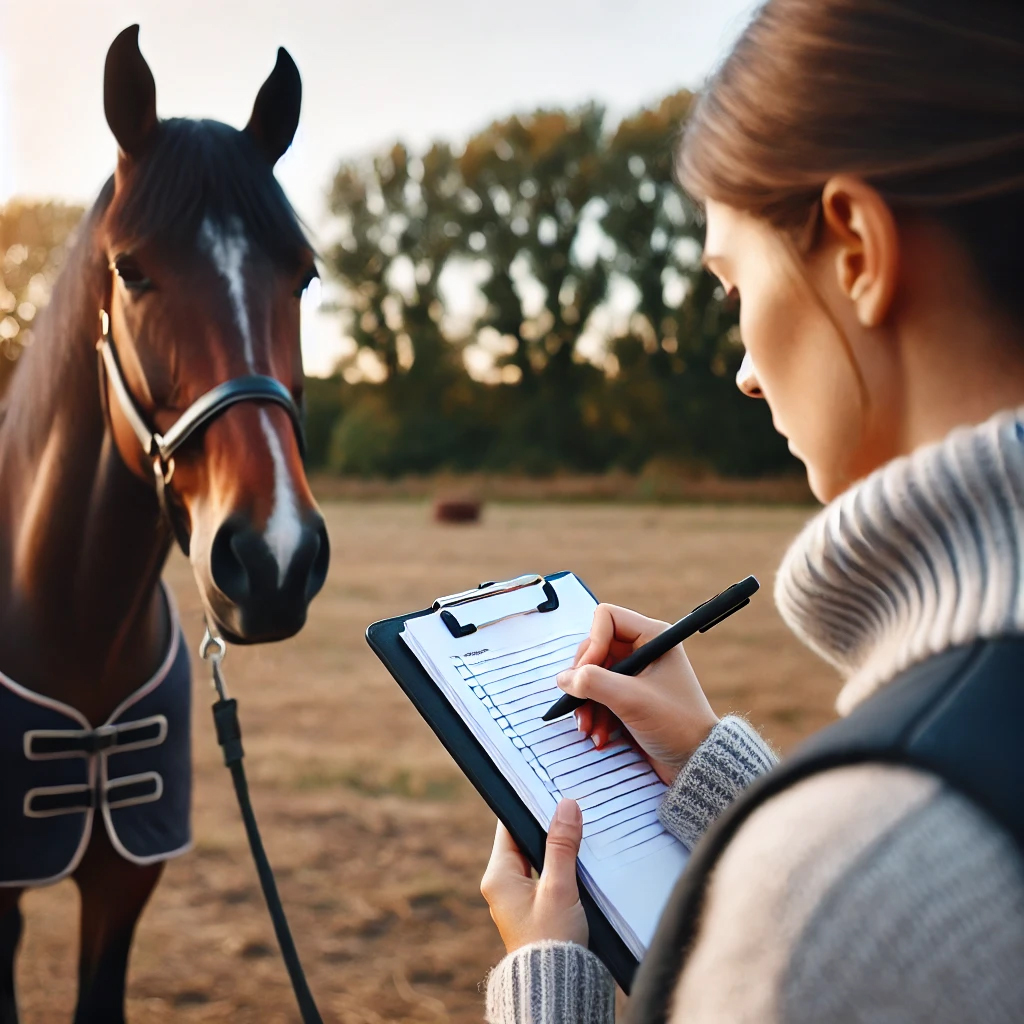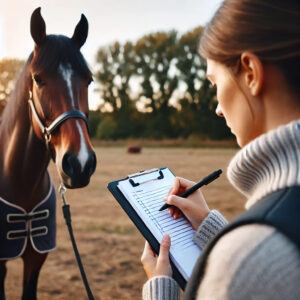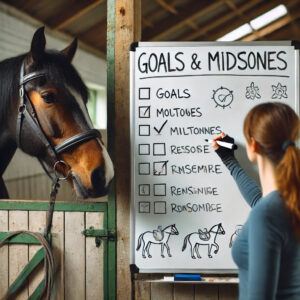Knowing Your Horse: The Foundation of Effective Training
Understanding your horse is the cornerstone of successful training. Each horse has unique traits, strengths, and preferences that influence how they learn and respond to training. In a lot of ways they are like us in that way. They can have good days and bad days, too.
Begin by assessing your horse’s current skill level and behavior. Does your horse quickly pick up new tasks, or does it require more time and patience? Does it excel at jumping, or is it more comfortable with dressage?
If you start working with your horse shortly after birth it will be a whole lot easier to access these things, but we can’t always start with them as foals. It will take some patience for you to discover what they need.
Horses, like people, have individual learning styles. Some respond well to repetitive exercises, while others need variety to stay engaged. Observing your horse’s reactions to different cues and how it communicates will help you tailor your training approach. Building a strong foundation of trust and communication with your horse is crucial. This relationship is built on mutual respect and understanding, paving the way for effective training and deeper connection.
Setting Goals and Milestones: Your Training Blueprint
Establishing clear goals and milestones is essential for guiding your horse’s development. Start by identifying what you want to achieve in the short term, such as improving gait or mastering a new command. Long-term goals might include preparing for shows or enhancing endurance for trail riding.  Ensure your goals are SMART: Specific, Measurable, Achievable, Relevant, and Time-bound. You may print these SMART Goal sheets for your own personal use.
Ensure your goals are SMART: Specific, Measurable, Achievable, Relevant, and Time-bound. You may print these SMART Goal sheets for your own personal use.
Developing a timeline for these goals acts as a roadmap, showing where you are, where you’re headed, and the steps you need to take along the way. This helps keep your training on track and allows for adjustments when necessary. It’s important to remain flexible, as not all horses progress at the same rate. If your horse isn’t meeting a milestone, reassess and adjust your goals without losing sight of your overall objectives.
Celebrate achievements along the way. Recognizing and rewarding milestones can reinforce positive behavior and keep both you and your horse motivated. Positive reinforcement encourages your horse to continue learning and growing.
Choosing the Right Techniques and Equipment
Selecting appropriate training techniques is like solving a puzzle, considering each horse’s unique personality and needs. Explore classical training approaches alongside newer, science-backed methods to develop a comprehensive understanding of what might work best for your horse.
Once you’ve identified the right techniques, choose the appropriate equipment. This includes selecting the right saddle, bridle, and any specialized gear like training cones or jump sets. Ensure the equipment is comfortable and safe for your horse, as the wrong gear can hinder progress or cause injuries.
Cross-training is beneficial, offering variety and conditioning for both the mind and body of your horse. Incorporate different exercises such as dressage (see bottom of article for more details on this), trail riding, and groundwork to prevent boredom and promote overall fitness. Think of it as a comprehensive fitness program for your horse.
Staying informed about the latest equine training research is crucial. Methods evolve, and staying updated helps you apply the most effective and humane techniques. Subscribe to reputable equine journals, attend workshops, and learn from experienced trainers to enhance your knowledge.
Monitoring Progress and Maintaining Flexibility
Consistent evaluations are essential for monitoring progress and ensuring you’re on the right track. Set regular intervals for assessments to celebrate progress and make necessary adjustments. Flexibility is key, as even the best plans may need to change based on real-world experiences.
Adaptability in training allows you to respond to your horse’s needs with compassion and understanding. If your horse isn’t responding well or shows signs of stress, it’s important to pivot and adjust your approach. Keeping a training diary, video log, or using a digital app can help track improvements and challenges, serving as a valuable resource for future training.
Incorporating rest and recovery into your training plan is as important as the training itself. Prioritize your horse’s health by allowing regular rest periods to prevent injuries and mental fatigue. This ensures your horse remains enthusiastic and ready to learn.
Embarking on the Training Journey
With mindfulness and resilience, you and your horse can achieve your training goals. Establishing a strong foundation of understanding, setting clear goals, choosing the right techniques and equipment, and maintaining flexibility will create a harmonious and successful training process. Enjoy the journey of growth and mutual respect with your equine partner.
Dressage:
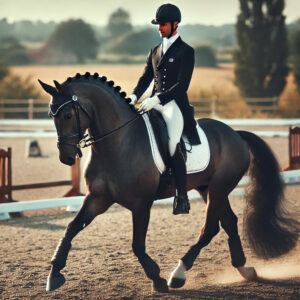
Dressage is a highly skilled form of horse training that focuses on the horse’s ability to perform a series of precise movements in response to subtle cues from the rider. The term “dressage” is derived from the French word “dresser,” meaning “to train.”
Key Aspects of Dressage:
- Training and Discipline: Dressage training emphasizes the horse’s development through a systematic and progressive training regimen. This discipline aims to enhance the horse’s natural athletic ability and willingness to perform.
- Movements and Exercises: Dressage involves a variety of movements and exercises, known as “figures,” which the horse performs in an arena. These can range from basic gaits like walking, trotting, and cantering to more advanced maneuvers like pirouettes, passage, and piaffe.
- Levels of Competence: Dressage is practiced at different levels, from beginner (training level) to advanced (Grand Prix level). Each level has specific tests that the horse and rider must perform to demonstrate their proficiency.
- Harmony and Precision: The goal of dressage is to achieve a harmonious partnership between horse and rider. The horse should appear relaxed, responsive, and willing, while the rider’s aids (signals) should be nearly imperceptible to the casual observer.
- Competition: In competitive dressage, riders perform a series of prescribed movements, or tests, in front of judges who score them based on accuracy, fluidity, and the horse’s obedience and athleticism.
Benefits of Dressage:
- Improves Communication: Dressage enhances the communication between horse and rider, fostering a deeper bond and mutual understanding.
- Develops Athleticism: The training improves the horse’s strength, flexibility, and overall physical condition.
- Mental Stimulation: Dressage challenges the horse mentally, keeping it engaged and responsive to the rider’s cues.
Dressage is often referred to as “ballet for horses” due to its emphasis on grace, precision, and the seamless interaction between horse and rider.
